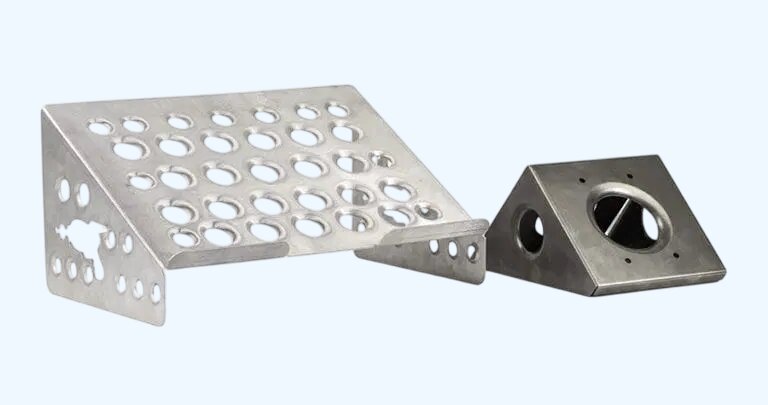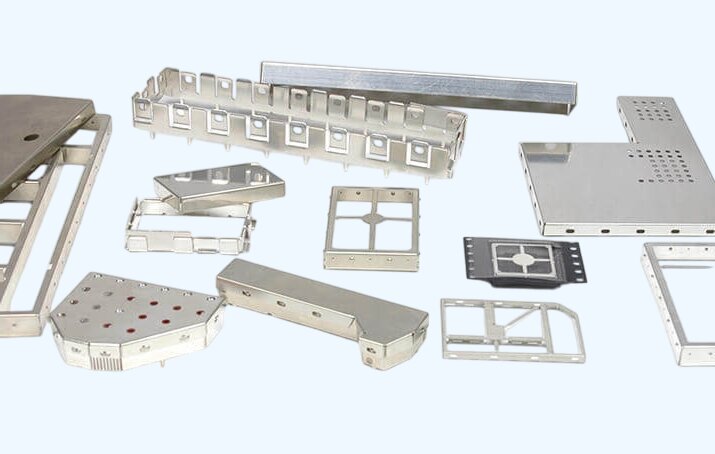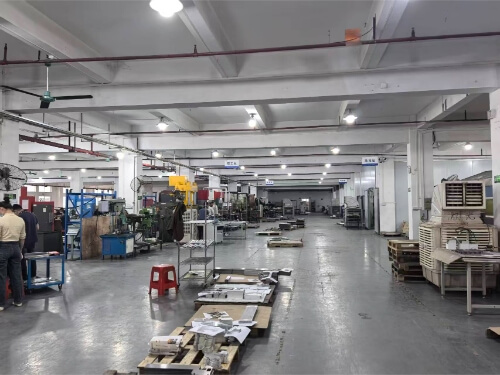エンジニアや設計者は、精度、耐久性、経済性のバランスが取れた適切な金属成形プロセスを選択するのに苦労することがよくあります。銅のスタンピングは、メーカーが原材料を複雑で高性能な部品に驚くべき効率で変換することを可能にし、ゲームを変えるソリューションとして登場しました。
このブログは、銅プレスの複雑さを明らかにし、エンジニア、デザイナー、製造業者にもわかりやすくすることを目的としています。
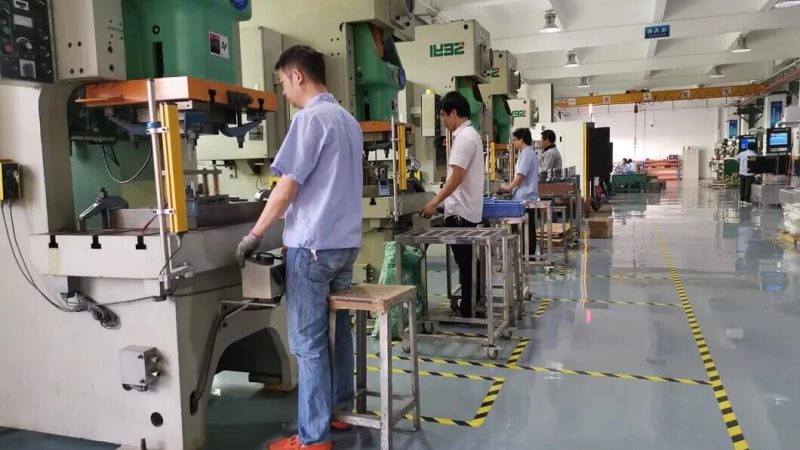
銅プレスの基本
銅のプレス加工は、金型を備えたプレス機を使って銅板を特定の形に成形する製造プロセスです。銅プレスの基本を理解することで、実用的な部品を設計・製造する能力が格段に高まります。
銅プレスとは?
銅のスタンピングは、平らな銅板を複雑な形やデザインに変える製造技術です。この工程では通常、金属を成形するために大きな力を加える金型を備えたスタンピング・プレスが使われます。銅の優れた導電性、柔軟性、耐食性により、この方法はさまざまな産業で広く利用されています。
プレス加工に関連する銅の特性
銅は、スタンピング用途に特に適したいくつかの基本的な特性を持っています:
- 優れた電気伝導性と熱伝導性:銅はその優れた導電性で有名であり、電気部品にとって極めて重要である。
- 柔軟性:銅は割れることなく簡単に成形できるので、メーカーは複雑なデザインを作ることができる。
- 耐腐食性:銅は自然に保護酸化被膜を形成し、耐食性を高める。
- 延性:銅は破断することなく大きな変形を起こすことができるため、プレス加工のストレスに耐えることができます。
プロジェクトに適した銅素材の選択
プレス加工に適した銅素材を選ぶには、いくつかの要素を考慮する必要があります:
- 応募資格:導電性、強度、耐食性のいずれを優先させるかを検討する。
- 環境条件:使用環境を考慮すること。部品が湿気や化学薬品にさらされる場合は、耐食性合金を使用するのが有利な場合がある。
- 製造プロセス:選択された材料が、スタンピングや、はんだ付け、あるいは、箔押しなどの後工程で、どのように機能するかを評価する。 溶接.
銅のスタンピング・テクニック
銅のプレス加工には、特定の生産ニーズや設計要件に合わせたさまざまな技術があります。ここでは、銅の製造に使われる主なスタンピング技術を4つ紹介します。
プログレッシブダイスタンピング
プログレッシブダイスタンピング は非常に効率的な方法で、連続した銅のストリップに複数の加工を施すために、一連のダイを使用します。金属ストリップが機械内を移動するにつれ、各ダイ・ステーションは特定の作業、切断、曲げ、成形を行い、最終的な部品が完成します。
深絞りスタンピング
ディープ・ドロー・スタンピング は、平らな銅板から深くて空洞のある形状を作り出す技術です。このプロセスでは、パンチを使って金属をダイの空洞に引き込み、素材を伸ばして希望の形に成形します。
コイニングとエンボス加工
コイニングとエンボスは、銅の表面に凹凸をつけるスタンピング技術です。コイニングでは高圧をかけて正確な形やパターンを作り、エンボスではシートの裏から素材を押し出すことで盛り上がったデザインを作ります。
精密部品用ファインブランキング
ファインブランキング は、非常に厳しい公差と滑らかなエッジを持つ部品を製造する特殊なスタンピングプロセスです。この技術には、金属を変形させることなくきれいにせん断するために大きな力を加えるブランキングプレスが使用されます。
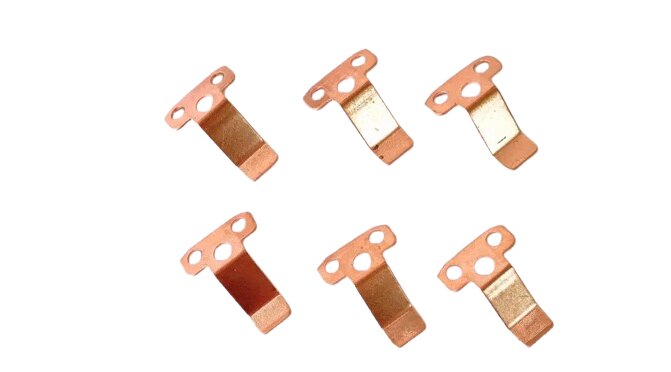
銅のスタンプの押し方:ステップ・バイ・ステップ・ガイド
銅のプレス加工は、綿密に計画された製造工程を経て、原材料を精密な部品へと変化させます。各工程では、技術的な専門知識、高度な設備、細部への細心の注意が必要とされます。
材料の選択と準備
技術者は素材の厚み、表面品質、冶金的特性を注意深く検査します。銅板をきれいにし、平らにし、スタンピングの精度を損なう可能性のある表面の汚れを取り除きます。
スタンピング工程
プレス加工には複数の重要な段階があります。機械的なプレスは正確に設計された金型を使い、銅板を変形させるために制御された力を加えます。複雑な部品は、材料の延性を維持し、加工硬化を防ぐために、中間的な焼きなましを行ないながら、何度もスタンピングを行なう必要があります。
品質管理と検査
厳格な品質管理措置により、プレス加工された各部品が正確な仕様を満たしていることが保証されます。技術者は、座標測定機(CMM)などの高度な測定機器を使用して寸法精度を検証します。
銅プレス用金型
金型は銅のプレス加工において非常に重要な要素であり、品質や生産効率に直接影響します。このセクションでは、銅のスタンピング金型の設計上の注意点と、スタンピング金型によく使われる材質について説明します。
銅プレス金型の設計に関する考察
銅プレス用の金型を設計する場合、性能と寿命を最適化するために、いくつかの重要な要素を考慮しなければなりません:
- 金型形状:金型の形状と構成は、プレス加工された部品の意図されたデザインと一致する必要があります。
- クリアランス:ダイとパンチの間に十分なクリアランスを確保することは、摩耗や損傷につながる過度の摩擦を防ぐために非常に重要です。
- 素材の選択:金型材料は、その寿命を通じて寸法精度を維持しながら、高圧に耐え、摩耗に耐えるものでなければならない。
- メンテナンスの容易さ:メンテナンスを考慮して金型を設計することで、修理や調整を迅速に行うことができます。
スタンピングツールに使用される材料
スタンピング金型の材料を選択することは、望ましい性能特性を達成するために非常に重要です。スタンピング金型の構造に使用される一般的な材料には、以下のようなものがあります:
- 工具鋼:高炭素および合金工具鋼は、その優れた硬度、耐摩耗性、鋭利な刃先を維持する能力により、頻繁に使用される。
- 超硬合金:卓越した硬度と耐摩耗性で知られ、耐久性が最優先される高性能用途によく使用される。
- スチールボンド超硬合金:鋼の靭性と超硬合金の硬さを併せ持ち、強度と耐摩耗性を必要とする用途に適しています。
- アルミニウム青銅:銅のような非鉄金属を含む用途では、アルミニウム青銅は、その良好な付着防止特性により、金型材料として使用することができます。
- ポリマー材料:場合によっては、耐摩耗性は低くてもよいが、軽量化が望まれる特定の用途に、ポリマーベースの材料が利用される。
銅プレス:長所と短所
銅プレスは広く使われている製造工程で、多くの利点がありますが、欠点もあります。これらの長所と短所を理解することで、メーカーは銅プレス加工が自分たちのプロジェクトに適しているかどうかを判断することができます。
長所
- 優れた導電性:銅はその優れた導電性で知られており、エレクトロニクス、自動車、電気システムなどの用途に最適です。
- 耐腐食性:銅の自然な耐食性は、プレス部品の寿命を延ばします。
- 展性と延性:銅は壊れることなく、簡単に複雑なデザインに成形することができる。
- 美的アピール:銅の温かみのある色合いと自然な光沢は、製品に独特の美的価値を与えます。
短所
- 高い初期金型費用:銅プレス用の特注の金型や工具の製造は高くつきます。
- 小ロットへの適性は限定的:小ロットや1個生産の場合、金型製作にかかるコストはメリットを上回る可能性がある。
- 精度の限界:銅プレスは複雑なデザインを可能にしますが、非常に厳しい公差を達成するのは難しいことです。
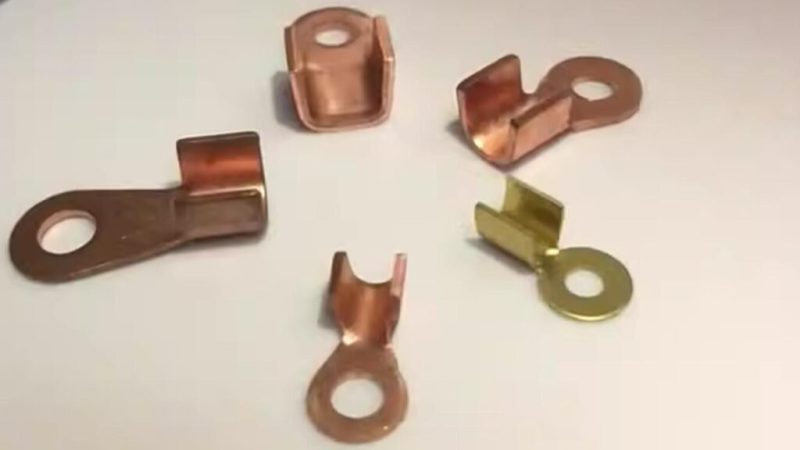
銅プレスの用途
銅のプレス加工は幅広い産業で使われる万能の製造プロセスです。ここでは、さまざまな分野での銅プレスの重要な用途について見ていきます。
電子・電気産業
電子・電気業界では、銅のプレス加工は高い導電性と信頼性を必要とする部品を製造する上で非常に重要です。一般的な用途は以下のとおりです:
- コネクタと端子
- ヒートシンク
- スイッチとリレー
- 回路基板
自動車および航空宇宙用途
銅のプレス加工は自動車産業や航空宇宙産業にも不可欠で、厳しい条件に耐えなければならない部品の製造に使用されています。主な用途は以下の通りです:
- 電気システム
- コネクターと配線
- 熱交換器
- 航空宇宙部品
産業・消費財
銅のプレス加工は、工業部品や消費財の生産に広く利用されています。主な用途は以下の通りです:
- 配管設備
- 建築の特徴
- 医療機器
- コンシューマー・エレクトロニクス
結論
銅のプレス加工は、革新的なデザインと正確なエンジニアリングの橋渡しをする、現代の製造技術の頂点に位置 するものです。この洗練された工程は、生の銅素材を高性能の部品へと変貌させ、さまざまな産業における技術の進歩を促します。

ケビン・リー
レーザー切断、曲げ加工、溶接、表面処理技術を専門とし、板金加工において10年以上の実務経験があります。シェンゲンのテクニカルディレクターとして、複雑な製造上の課題を解決し、各プロジェクトにおける革新と品質の向上に尽力しています。


